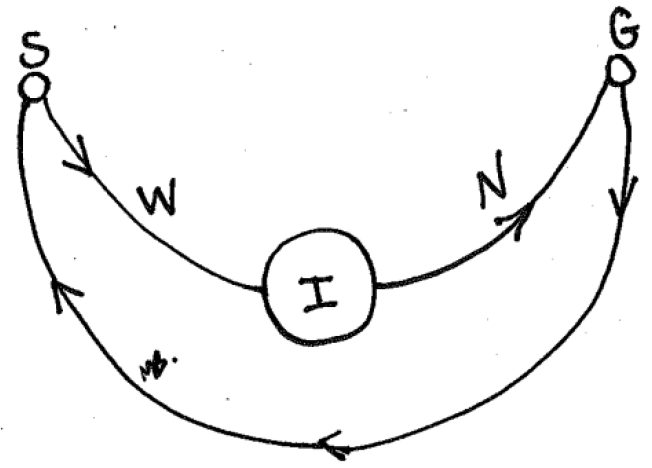A Coaching Model Created by Melissa Bosomworth
(Wellness Coach, CANADA)
Life naturally presents us many points of transition and opportunities. Some are intentional and planned, whereas others may occur out of circumstances. Whether you are beginning a new career, moving in with a romantic partner, becoming a parent or experiencing a loss of any kind, opportunities are awaiting you. Using the SWING model, you will embark on a journey where you are constantly in motion.
Just like riding a swing, backwards motion is the exciting build towards something uplifting. We use that momentum to propel us forward and gain new heights. We enjoy the ride and keep the momentum going to carry through to the next situation. The visual of this model illustrates how many times the client presents in a heightened emotional state since the situation is very personal to them. The coach’s role is to support the client so they feel safe and ready to further explore the situation before momentum and excitement carry them to towards action.

S – Situation
Coaching begins with the client sharing a situation. Time is spent in this area exploring the topic to help the client frame the conversation. This sets a context for what the client is experiencing and what they are most concerned about focusing on in the present time.
ICF Competencies: active listening; coaching presence; direct communication; establishing the coaching agreement; establishing trust and intimacy with the client.
W – What’s at Stake?
While the emotions around the situation begin to de-escalate, the client is able to explore the situation so they can begin to have clarity around the issue. The coach uses a number of tools to allow the client an opportunity to gain insight and awareness of the situation and how it directly impacts the client.
ICF Competencies: active listening; coaching presence; creating awareness; direct communication; managing progress and accountability; powerful questioning.
I – Intention
After establishing the importance of the situation, the client is most grounded and able to explore their choices. There may be some awareness around their level of responsibility, control, options, pros and cons, available resources, etc. Even in difficult or unpleasant situations, there are opportunities to use the situation to create an ideal outcome. Many coaching tools will help clients make important decisions and see their options with a different lens. This is a good time for exploring underlying beliefs, reframing perspectives, using a power tool and any other coaching skills and tools learned throughout your practice.
Before leaving this stage, the client sets a clear intention for where they want to go.
ICF Competencies: active listening; coaching presence; creating awareness; designing action; direct communication; managing progress and accountability; powerful questioning.
N – Next steps
Here is where the client creates their action plan by using all the insights gained in the previous stages. The goal is to help the client reach their intended outcome. The momentum and excitement is beginning to build as the client shifts into action mode.
ICF Competencies: active listening; coaching presence; designing actions; direct communication; managing progress and accountability; planning and goal setting; powerful questioning.
G – Go for it
All the work may seem over for the client. They have identified their situation and the importance of it, they have set an intention and made a plan. Before moving forward and executing their plan, the safety net of accountability must be established. How will the client hold themselves accountable to the plan?
ICF Competencies: active listening; coaching presence; designing actions; direct communication; managing progress and accountability; planning and goal setting; powerful questioning.
In the physical world, swings are anchored to the ground by their supporting structure. Psychologically, people are also anchored to the ground by their values, strengths, resiliency, support system etc. However, a coach might encounter a client where there anchors are not visible to them or they are broken. The coach then uses the swing model to help the client build reinforcements so the client to learn to trust themselves and their choices. Just like a swing, we can keep our personal development in constant motion by using the opportunity of a situation to provide insight into ourselves and choosing to act on them in accordance to our values and purpose to continue to soar to new heights.